SC-200 Exam: Microsoft Security Operations Analyst Guide + Free Practice Tests
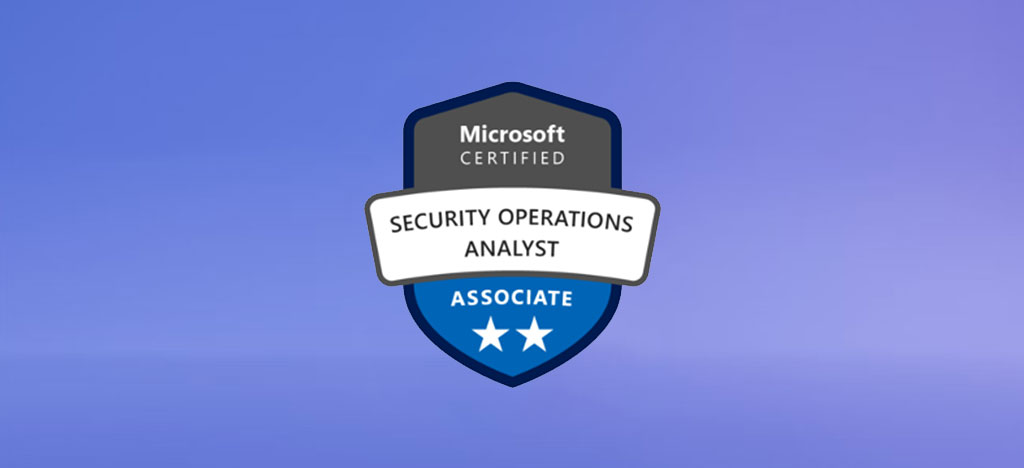
The cybersecurity landscape in 2025 is evolving at a record pace. With threat actors becoming more automated and AI-driven, organizations need professionals who can analyze signals, respond to incidents, and strengthen defenses with precision. That’s exactly why the SC-200: Microsoft Security Operations Analyst certification remains one of the most in-demand credentials today.
If you’re preparing for the SC-200 exam—or simply exploring whether it’s worth pursuing—this guide gives you everything you need: real-world insights, exam structure, study tips, salary expectations, job roles, career paths, and free practice test resources to accelerate your preparation.
This isn’t generic theory. It’s a practical, data-driven, candidate-oriented guide designed to help you understand whether SC-200 fits your career goals and how to pass it efficiently.
Table of Contents
- What Is the SC-200 Certification?
- What Does a Microsoft Security Operations Analyst Do?
- Why SC-200 Still Matters in 2025
- SC-200 Exam Overview (Latest 2025 Structure)
- Skills Measured in SC-200
- Is SC-200 Hard? Difficulty Breakdown
- How Long Does It Take to Prepare for SC-200?
- Best Study Plan (Beginner → Intermediate → Pro)
- Best Practice Tests for SC-200
- SC-200 Free Online Practice Test
- Career Paths With SC-200
- Salary Expectations for SC-200 Holders
- Is SC-200 Enough to Get a Job With No Experience?
- SC-200 vs. Other Popular Security Certifications
- Real-World Case Studies
- Is SC-200 Worth It in 2025 and Beyond?
- Conclusion
- FAQs
What Is the SC-200 Certification?
The SC-200 certification validates your ability to protect an organization by reducing risk, detecting threats, and responding to security incidents using Microsoft security solutions. It focuses heavily on Microsoft Sentinel, Defender XDR, Entra ID Protection, and cloud-native security tools.
It is part of Microsoft’s Security, Compliance & Identity certification track.
What Does a Microsoft Security Operations Analyst Do?
Professionals with SC-200 typically specialize in:
- Investigating and triaging security alerts
- Using Microsoft Sentinel for threat detection
- Performing threat hunting
- Responding to incidents with Defender XDR
- Improving security posture
- Reducing organizational risk through analytics and automation
This role sits at the heart of modern SOC operations.
Why SC-200 Still Matters in 2025
In 2025, Microsoft reported significant growth in enterprise adoption of Sentinel and Defender XDR. As companies shift security workloads to cloud-native SIEM and XDR platforms, SC-200-certified analysts are becoming core hires.
SC-200 remains relevant because:
- Microsoft is the world’s most widely-deployed enterprise security ecosystem
- SOC automation is expanding
- Threat actors use AI extensively
- Organizations need analysts who can interpret signals and respond quickly
This keeps SC-200 highly valuable.
SC-200 Exam Overview (Latest 2025 Structure)
- Exam Code: SC-200
- Duration: 120 minutes
- Format: Multiple choice, case studies, labs (if available)
- Price: Varies by region (USD $165-$195 estimated)
- Passing Score: 700/1000
- Availability: Global
Microsoft updates the skills outline frequently, so always check the official exam page.
Skills Measured in SC-200
The exam covers three core areas:
1. Mitigate threats using Microsoft Defender XDR
(= ~40–45% of exam)
2. Mitigate threats using Microsoft Sentinel
(= ~25–30% of exam)
3. Mitigate threats using third-party and Microsoft security solutions
(= ~25–30% of exam)
Includes items like:
- KQL (Kusto Query Language)
- Sentinel workbooks & playbooks
- Incidents, alerts, automation rules
- Defender for Identity/Hunting queries
- Cloud app security
Is SC-200 Hard? Difficulty Breakdown
SC-200 is considered moderately difficult, especially for beginners. Candidates struggle most with:
- KQL queries
- Sentinel analytics rules
- Incident response automation
- Cross-platform visibility
If you have no SOC or SIEM experience, expect a learning curve.
How Long Does It Take to Prepare for SC-200?
Typical preparation times:
| Experience Level | Study Time |
|---|---|
| No experience | 8–12 weeks |
| 1 year in security | 4–6 weeks |
| Experienced SOC | 2–4 weeks |
Time varies based on hands-on practice, not theory.
Best Study Plan (Beginner → Intermediate → Pro)
Beginner (Weeks 1–4)
- Learn cybersecurity fundamentals
- Build a lab environment
- Start with Microsoft Learn modules
- Begin KQL training basics
Intermediate (Weeks 4–8)
- Build Sentinel playbooks
- Practice incident investigation
- Create custom analytics rules
- Start daily KQL problem solving
Pro Level (Weeks 8–12)
- Automate incident workflows
- Complete hands-on practice exams
- Analyze real-world SOC scenarios
A strong study plan should always include frequent scenario-based labs.
Best Practice Tests for SC-200
For reliable practice materials, many candidates use:
- Microsoft official practice questions
- Lab-based learning in Sentinel
- KQL challenge repositories
- Community-based incident investigation labs
A highly recommended source is:
👉 Leads4Pass SC-200 Practice Tests (https://www.leads4pass.com/sc-200.html)
It provides updated exam dumps, practice questions, and scenario-based items aligned with the 2025 exam experience.
SC-200 Free Online Practice Test
| Number of exam questions | Complete study materials | Update time |
| 15 (Free) | 406 Q&A | Nov 2025 |
Question 1:
You have a playbook in Azure Sentinel.
When you trigger the playbook, it sends an email to a distribution group.
You need to modify the playbook to send the email to the owner of the resource instead of the distribution group.
What should you do?
A. Add a parameter and modify the trigger.
B. Add a custom data connector and modify the trigger.
C. Add a condition and modify the action.
D. Add a parameter and modify the action.
Correct Answer: D
Reference: https://azsec.azurewebsites.net/2020/01/19/notify-azure-sentinel-alert-to-your-email-automatically/
Question 2:
You have a Microsoft 365 subscription that uses Azure Defender.
You have 100 virtual machines in a resource group named RG1.
You assign the Security Admin roles to a new user named SecAdmin1.
You need to ensure that SecAdmin1 can apply quick fixes to the virtual machines by using Azure Defender. The solution must use the principle of least privilege.
Which role should you assign to SecAdmin1?
A. the Security Reader role for the subscription
B. the Contributor for the subscription
C. the Contributor role for RG1
D. the Owner role for RG1
Correct Answer: C
Question 3:
You have an Azure subscription that has the enhanced security features in Microsoft Defender for Cloud enabled and contains a user named User1.
You need to ensure that User1 can export alert data from Defender for Cloud. The solution must use the principle of least privilege.
Which role should you assign to User1?
A. User Access Administrator
B. Owner
C. Contributor
D. Reader
Correct Answer: B
Question 4:
HOTSPOT
You have a Microsoft Sentinel workspace that has a default data retention period of 30 days. The workspace contains two custom tables as shown in the following table.

Each table ingested two records per day during the past 365 days.
You build KQL statements for use in analytic rules as shown in the following table.
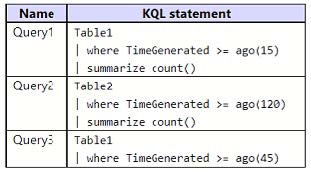
For each of the following statements, select Yes if the statement is true. Otherwise, select No. NOTE: Each correct selection is worth one point.
Hot Area:

Correct Answer:

Question 5:
HOTSPOT
You need to create a query to investigate DNS-related activity. The solution must meet the Microsoft Sentinel requirements.
How should you complete the query? To answer, select the appropriate options in the answer area.
NOTE: Each correct selection is worth one point.
Hot Area:

Correct Answer:
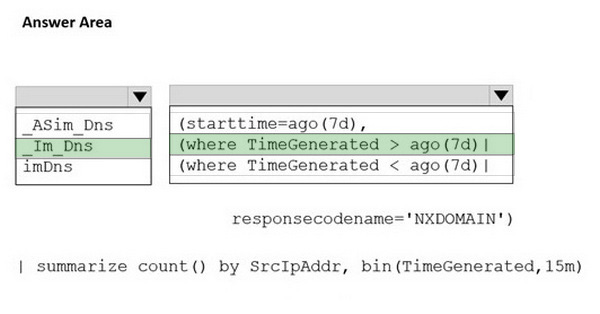
Box 1: _Im_Dns
Fabrikam identifies the following Microsoft Sentinel requirements:
Query for NXDOMAIN DNS requests from the last seven days by using built-in Advanced Security Information Model (ASIM) unifying parsers.
Unifying parsers
When using ASIM in your queries, use unifying parsers to combine all sources, normalized to the same schema, and query them using normalized fields. The unifying parser name is _Im_ for built-in parsers and im for
workspace deployed parsers, where stands for the specific schema it serves.
For example, the following query uses the built-in unifying DNS parser to query DNS events using the ResponseCodeName, SrcIpAddr, and TimeGenerated normalized fields:
_Im_Dns(starttime=ago(1d), responsecodename=\’NXDOMAIN\’) | summarize count() by SrcIpAddr, bin(TimeGenerated,15m)
The example uses filtering parameters, which improve ASIM performance. The same example without filtering parameters would look like this:
_Im_Dns | where TimeGenerated > ago(1d) | where ResponseCodeName =~ “NXDOMAIN” | summarize count() by SrcIpAddr, bin(TimeGenerated,15m)
Box 2: (where TimeGenerated > ago(7d) |
Reference: https://learn.microsoft.com/en-us/azure/sentinel/normalization-about-parsers
Question 6:
You have a Microsoft 365 E5 subscription.
Automated investigation and response (AIR) is enabled in Microsoft Defender for Office 365 and devices use full automation in Microsoft Defender for Endpoint.
You have an incident involving a user that received malware-infected email messages on a managed device.
Which action requires manual remediation of the incident?
A. soft deleting the email message
B. hard deleting the email message
C. isolating the device
D. containing the device
Correct Answer: C
Question 7:
HOTSPOT
You have a Microsoft 365 E5 subscription that uses Microsoft Defender 365.
Your network contains an on-premises Active Directory Domain Services (AD DS) domain that syncs with Azure AD.
You need to identify LDAP requests by AD DS users to enumerate AD DS objects.
How should you complete the KQL query? To answer, select the appropriate options in the answer area.
NOTE: Each correct selection is worth one point.
Hot Area:
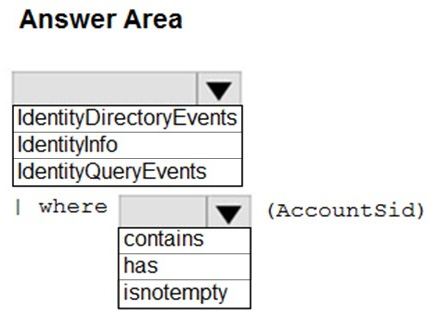
Correct Answer:
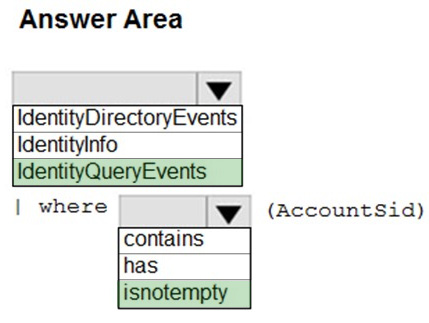
Box 1: IdentityQueryEvents
The IdentityQueryEvents table in the advanced hunting schema contains information about queries performed against Active Directory objects, such as users, groups, devices, and domains.
Box 2: isnotempty
Example:
IdentityQueryEvents
| where isnotempty(AccountSid)
| take 100
// IdentityQueryEvents
// – contains query activities performed against Active Directory objects, such as users, groups, devices, and domains monitored by Azure ATP
// – Includes SAMR, DNS and LDAP requests
// ————–
Incorrect:
IdentityInfo
The IdentityInfo table in the advanced hunting schema contains information about user accounts obtained from various services, including Azure Active Directory.
IdentityDirectoryEvents
IdentityDirectoryEvents
The IdentityDirectoryEvents table in the advanced hunting schema contains events involving an on-premises domain controller running Active Directory (AD). This table captures various identity-related events, like password changes,
password expiration, and user principal name (UPN) changes. It also captures system events on the domain controller, like scheduling of tasks and PowerShell activity.
Reference: https://learn.microsoft.com/en-us/microsoft-365/security/defender/advanced-hunting-identityqueryevents-table https://learn.microsoft.com/en-us/microsoft-365/security/defender/advanced-hunting-identitydirectoryevents-table https://github.com/microsoft/Microsoft-365-Defender-Hunting-Queries/blob/master/Webcasts/TrackingTheAdversary/Episode%201%20-%20KQL%20Fundamentals.txt
Question 8:
DRAG DROP
You have a Microsoft subscription that has Microsoft Defender for Cloud enabled You configure the Azure logic apps shown in the following table.

You need to configure an automatic action that will run if a Suspicious process executed alert is triggered. The solution must minimize administrative effort.
Which three actions should you perform in sequence? To answer, move the appropriate actions from the list of actions to the answer area and arrange them in the correct order.
Select and Place:
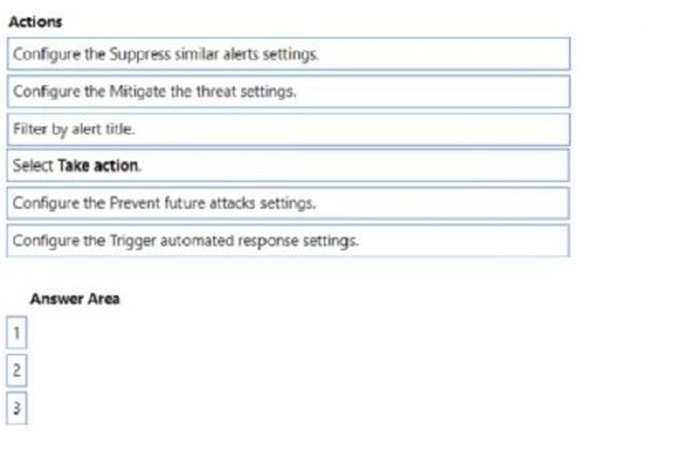
Correct Answer:
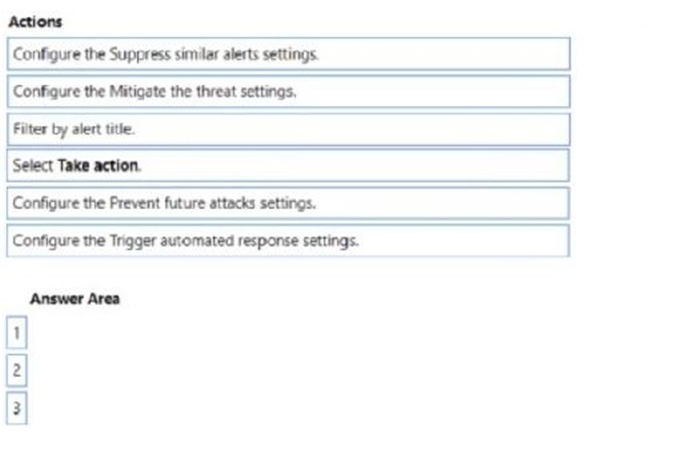
Question 9:
You have a Microsoft Sentinel workspace that contains the following incident.
Brute force attack against Azure Portal analytics rule has been triggered.
You need to identify the geolocation information that corresponds to the incident. What should you do?
A. From Overview, review the Potential malicious events map.
B. From Incidents, review the details of the iPCustomEntity entity associated with the incident.
C. From Incidents, review the details of the AccouncCuscomEntity entity associated with the incident.
D. From Investigation, review insights on the incident entity.
Correct Answer: B
According to this article, Microsoft Defender for Cloud detects brute force attacks and triggers alerts that contain the attacking IP address in the ‘entities
Question 10:
You have a Microsoft 365 subscription that uses Microsoft Defender for Cloud Apps and has Cloud Discovery enabled.
You need to enrich the Cloud Discovery data. The solution must ensure that usernames in the Cloud Discovery traffic logs are associated with the user principal name (UPN) of the corresponding Microsoft Entra ID user accounts.
What should you do first?
A. From Conditional Access App Control, configure User monitoring.
B. Create a Microsoft 365 app connector.
C. Enable automatic redirection to Microsoft 365 Defender.
D. Create an Azure app connector.
Correct Answer: B
Question 11:
Which rule setting should you configure to meet the Azure Sentinel requirements?
A. From Set rule logic, turn off suppression.
B. From Analytics rule details, configure the tactics.
C. From Set rule logic, map the entities.
D. From Analytics rule details, configure the severity.
Correct Answer: C
Check any analytics rules, after you map the entities under the “Set rule logic” tab, then you can enable the “Alert grouping” under “Incident settings” by selecting “Enabled”, then select “Grouping alerts into a single incident if the selected entity types and details match:” and select the entities from the drop down menu.
Question 12:
You use Azure Sentinel.
By using a built-in role, you have to provide a security analyst with the ability to edit the queries of custom Azure Sentinel workbooks.
Which role should you assign to the analyst if using the principle of least privilege ?
A. Security Administrator
B. Azure Sentinel Responder
C. Azure Sentinel Contributor
D. Logic App Contributor
Correct Answer: C
https://docs.microsoft.com/en-us/azure/sentinel/roles
Question 13:
You need to receive a security alert when a user attempts to sign in from a location that was never used by the other users in your organization to sign in. Which anomaly detection policy should you use?
A. Impossible travel
B. Activity from anonymous IP addresses
C. Activity from infrequent country
D. Malware detection
Correct Answer: C
Activity from a country/region that could indicate malicious activity. This policy profiles your environment and triggers alerts when activity is detected from a location that was not recently or was never visited by any user in the organization.
Activity from the same user in different locations within a time period that is shorter than the expected travel time between the two locations. This can indicate a credential breach, however, it\’s also possible that the user\’s actual location is
masked, for example, by using a VPN.
Reference:
https://docs.microsoft.com/en-us/cloud-app-security/anomaly-detection-policy
Question 14:
You need to ensure that the Group1 members can meet the Microsoft Sentinel requirements. Which role should you assign to Group1?
A. Microsoft Sentinel Automation Contributor
B. Logic App Contributor
C. Automation Operator
D. Microsoft Sentinel Playbook Operator
Correct Answer: B
Question 15:
You have 500 on-premises Windows 11 devices that use Microsoft Defender for Endpoint.
You enable Network device discovery.
You need to create a hunting query that will identify discovered network devices and return the identity of the onboarded device that discovered each network device.
Which built-in function should you use?
A. SeenBy()
B. DeviceFromIP()
C. next()
D. current_cluster_endpoint()
Correct Answer: A
…
Career Paths With SC-200 Certification
Common roles include:
- Security Operations Analyst
- SOC Analyst (L1–L3)
- Threat Hunter
- Incident Responder
- Security Engineer (Microsoft Ecosystem)
- Cloud Security Analyst
With the growth of Microsoft Sentinel, demand is continuously rising.
Salary Expectations for SC-200 Holders (2025)
Based on U.S. market data:
- Average salary: $95,000–$130,000/year
- Senior roles: $150,000+
- Contractors: $60–90/hour
Salaries vary by region and experience.
Is SC-200 Enough to Get a Job With No Experience?
If you have strong hands-on practice and lab work, yes, you can land entry-level SOC roles. But you must demonstrate:
- KQL proficiency
- Sentinel familiarity
- Ability to analyze incidents
Hands-on labs matter more than theory.
SC-200 vs. Other Popular Security Certifications
| Certification | Focus | Difficulty |
|---|---|---|
| SC-200 | Microsoft SOC, Sentinel, Defender | Moderate |
| CompTIA CySA+ | Vendor-neutral SOC | Moderate |
| GSEC | Broad security fundamentals | High |
| CEH | Ethical hacking | Moderate |
SC-200 is highly valuable if you plan to work in Microsoft-centered environments.
Real-World Case Studies
Case Study 1: A Helpdesk Tech Becomes SOC Analyst in 6 Months
A candidate with no security background studied SC-200, focused on KQL labs, and built Sentinel automations. They landed an L1 SOC role after demonstrating hands-on capabilities.
Case Study 2: A System Admin Moves to Security Engineering
A sysadmin used SC-200 to build expertise in Defender XDR and Sentinel, achieving a 40% salary increase during transition.
Is SC-200 Worth It in 2025 and Beyond?
Yes—because:
- Microsoft security tools continue to dominate the enterprise market
- SOC roles remain high-demand
- AI-driven threats require skilled analysts
- Sentinel adoption is increasing globally
SC-200 is future-proof and still worthwhile heading into 2026.
Conclusion
The SC-200 certification remains one of the strongest ways to break into cybersecurity or advance within SOC operations. With the rising adoption of Microsoft Sentinel and Defender XDR, certified analysts are becoming essential to modern organizations.
Whether you’re new to security or looking to solidify your career, SC-200 offers practical, hands-on skills that translate directly into real-world job performance.
If you’re preparing now, build a structured study plan, focus on labs, practice KQL daily, and make use of trusted practice tests such as Leads4Pass SC-200 resources to improve your exam readiness.
Your journey to becoming a Microsoft Security Operations Analyst starts now.
FAQs
1. What are the career paths available with SC-200?
SOC Analyst, Threat Hunter, Incident Responder, Security Engineer, Cloud Security Analyst.
2. What is the best way to study for SC-200?
Hands-on labs, KQL practice, Sentinel playbook creation, and reliable practice exams.
3. How many people pass SC-200 on the first try?
No official data available. Most candidates succeed after 4–8 weeks of focused practice.
4. Is SC-200 harder than CySA+?
SC-200 is more tool-focused (Sentinel/Defender), while CySA+ is vendor-neutral. Difficulty varies by background.
5. Is the Microsoft SC-200 certification still worthwhile in 2026?
Yes. With Microsoft’s ecosystem expanding rapidly, SC-200 remains highly relevant and valuable.